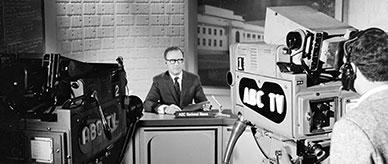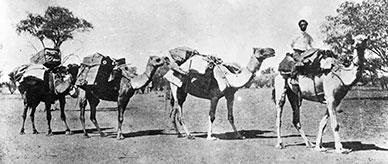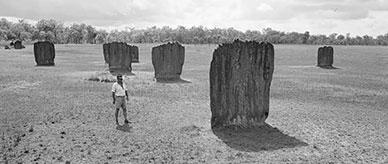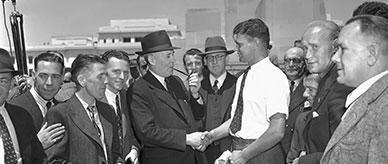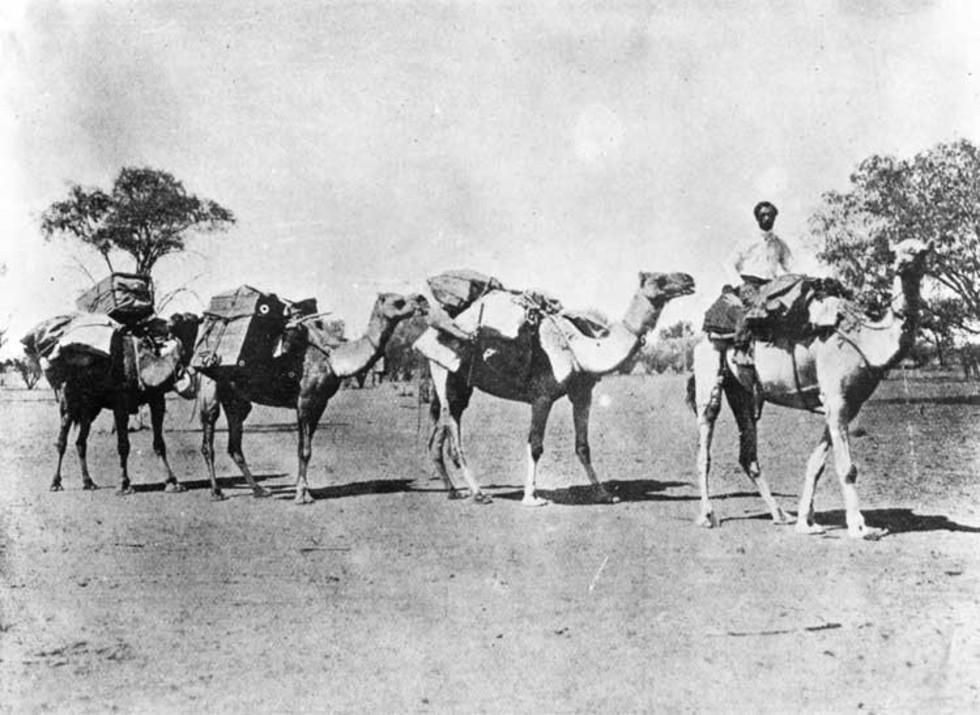


About this record
This is a photograph of a camel driver leading his train, which is laden with mail and other supplies, in outback Australia.
Educational value
- Depicts an 'Afghan' camel driver, one of many who came to Australia to handle the increasing numbers of camels being imported into Australia and who were instrumental in exploration, the delivery of mail and supplies to and from remote settlements, the construction of the Overland Telegraph and Central Australian Railway, and search and rescue missions (their influence is reflected in the naming of the Central Australian Railway as 'The Ghan') – the 'Afghans' were actually members of the Pathan tribe from an area that is now in Pakistan, and other parts of central Asia (including Afghanistan), and were therefore familiar with hostile terrain.
- Shows one of the ways in which mail and supplies were delivered in the early days of European settlement in outback Australia – while horses and bullock teams were also available, settlers generally preferred the 'Afghan' camel trains because they took fewer breaks, could take shortcuts across the desert and were therefore faster and more efficient.
- Suggests that camels are very hardy and useful in desert areas – they are able to carry up to 300 kilograms each, can survive for many days with little or no water and have hooves that are ideally suited to walking on soft, sandy ground.
- Shows camels in the Australian outback environment, in which they survived and thrived – so much so that it is now thought that Australia has the largest population of wild camels in the world.
- Provides an example of the desert region in central Australia – unlike some deserts that are completely devoid of vegetation (such as the Sahara), Australia's deserts typically support a range of scrubby and hardy shrubs and trees.
- Illustrates the types of harnesses and saddles used on camels at that time – made of rope, leather and wood, they are slightly different from those used on horses to accommodate the different body shape (especially the hump) of the camel; the driver would also have used nose pegs to help to keep the camels under control and hobbles for tying them up when resting.
Acknowledgments
Learning resource text © Education Services Australia Limited and the National Archives of Australia 2010.
Related themes
Need help with your research?
Learn how to interpret primary sources, use our collection and more.

